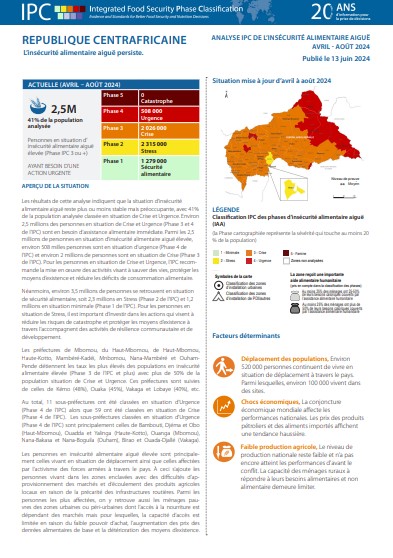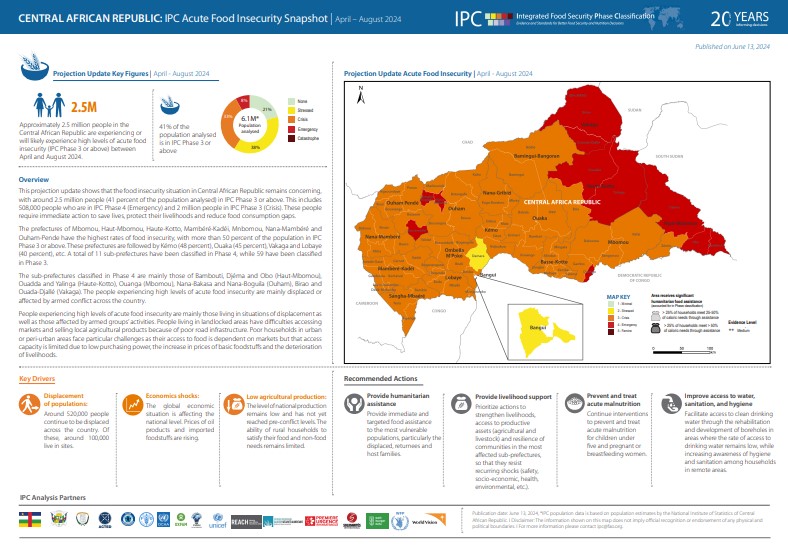
- © OCHA
CENTRAL AFRICAN REPUBLIC: Widespread displacement and armed conflict continue to drive 2.5 million people into high levels of acute food insecurity
This projection update shows that the food insecurity situation in Central African Republic remains concerning, with around 2.5 million people (41 percent of the population analysed) in IPC Phase 3 or above. This includes 508,000 people who are in IPC Phase 4 (Emergency) and 2 million people in IPC Phase 3 (Crisis). These people require immediate action to save lives, protect their livelihoods and reduce food consumption gaps.
The prefectures of Mbomou, Haut-Mbomou, Haute-Kotto, Mambéré-Kadéi, Mnbomou, Nana-Mambéré and Ouham-Pende have the highest rates of food insecurity, with more than 50 percent of the population in IPC Phase 3 or above. These prefectures are followed by Kémo (48 percent), Ouaka (45 percent), Vakaga and Lobaye (40 percent), etc. A total of 11 sub-prefectures have been classified in Phase 4, while 59 have been classified in Phase 3.
The sub-prefectures classified in Phase 4 are mainly those of Bambouti, Djéma and Obo (Haut-Mbomou), Ouadda and Yalinga (Haute-Kotto), Ouanga (Mbomou), Nana-Bakasa and Nana-Boguila (Ouham), Birao and Ouada-Djallé (Vakaga). The people experiencing high levels of acute food insecurity are mainly displaced or affected by armed conflict across the country.
People experiencing high levels of acute food insecurity are mainly those living in situations of displacement as well as those affected by armed groups’ activities. People living in landlocked areas have difficulties accessing markets and selling local agricultural products because of poor road infrastructure. Poor households in urban or peri-urban areas face particular challenges as their access to food is dependent on markets but that access capacity is limited due to low purchasing power, the increase in prices of basic foodstuffs and the deterioration of livelihoods.
Join our mailing list


